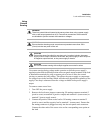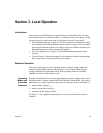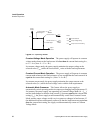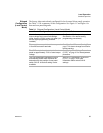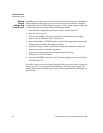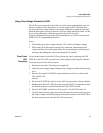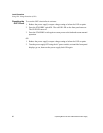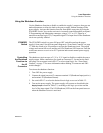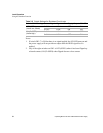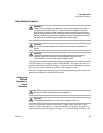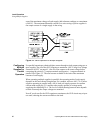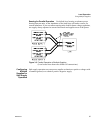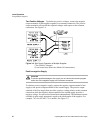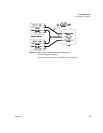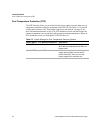Local Operation
Using the Shutdown Function
Release 2.1 63
Using the Shutdown Function
Use the Shutdown function to disable or enable the supply’s output so that you can
make adjustments to either the load or the power supply without shutting off the
power supply. Activate this function from the front panel at any time by using the
STANDBY switch. You can also activate it via remote control through the rear panel
J2 Programming and Monitoring connector, using a 2.5 V to 15 V signal or a
transistor-transistor logic (TTL) compatible signal. The input lines for the Shutdown
circuit are optically isolated.
STANDBY
Switch
The STANDBY switch is a press ON/press OFF switch located on the power
supply’s front panel. See the front panel diagram in “Front Panel Controls” on page
17. Push the switch to its IN position to activate the Shutdown circuit. The output
voltage and current fall to zero and the red S/D (Shutdown) LED turns on. Push the
switch once more to reset it to its OUT position and resume normal power supply
operation.
Controlling
the Shutdown
Function via
the J2
Connector
The shutdown circuit accepts a 2.5 V to 15 V signal to disable or enable the power
supply output. Make connections for signals at connector J2, located on the unit’s
rear panel. Set rear panel switch SW1-7 to select signal logic. See “Front Panel
Controls” on page 17 for more information about making J2 connector and SW1
switch changes.
To activate the shutdown function:
1. Turn OFF the power supply.
2. Connect the signal source to J2 connector terminal 15 (Shutdown Input/positive)
and terminal 14 (Shutdown Return).
3. Set switch SW1-7 to select the desired circuit logic as set out in Table 3.2.
4. Turn on the power supply. The power supply will operate as described in the
Supply Output column in Table 3.2, according to the logic you select and the
level of the input signal. The S/D (Shutdown) LED on the front panel turns on
when the Shutdown circuit is activated.



